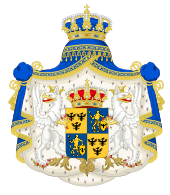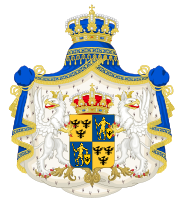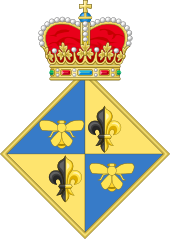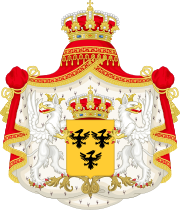Maria I Alessandra of Südlichesland
| Maria I Alessandra of Südlichesland | |||||
|---|---|---|---|---|---|
| Grand Duchess of Südlichesland | |||||
 Portrait of Maria I in 2024 | |||||
| Queen of the United Kingdom of Sildavia and Borduria | |||||
| Reign | 17 February 2020 - 15 April 2024 | ||||
| Enthronement | 17 February 2020 | ||||
| Predecessor | Herself as Queen of Sildavia | ||||
| Successor | Abdicated the throne | ||||
| Queen of Sildavia | |||||
| Reign | 1 March 2021 - 11 March 2023 | ||||
| Predecessor | Herself as Sovereign Princess | ||||
| Grand Duchess of Mëcklewmburg-Wladir | |||||
| Reign | 01 November 2023 - Present | ||||
| Predecessor | Grand Duchess Gabriela | ||||
| Born | 23 December 2002 Barão de Cocais, Brazil | ||||
| |||||
| House | Sildavia (Official) Flaviano (Agnatic) | ||||
| Father | Count Sebastião | ||||
| Mother | Countess Sonia | ||||
| Religion | Atheism | ||||
| Secretary-General of the Conference of Santiago | |||||
| In office 05 July 2023 – 05 January 2024 | |||||
| Preceded by | Infante Lucas, Duke of Frag | ||||
| Chancellor of Mëcklewmburg-Wladir | |||||
| In office 11 December 2021 – 01 November 2023 | |||||
| Monarchs | Grand Duchess Gabriela | ||||
| Preceded by | Office established | ||||
 |
|
Extended Royal Family (Cadet Branches):
|
Her Royal Highness Grand Duchess Maria I Alessandra of Südlichesland (Maria Alessandra Nikolaevna Feodorovna; 23 December 2002) is a micronationalist and was the first and last Queen of the United Kingdom of Sildavia and Borduria. She was the first female Head of State of the Conference of Santiago, an advocate for LGBTQIA+ movement among Brazilian micronationalists and one of the founders of the Brazilian sector, a strong supporter of the derivatist micronationalism. She became the first woman to be Secretary-General of the Conference of Santiago when elected on July 2023.
Maria is the daughter of Count Sebastião and Countess Sonia. She assumed the Sildavian throne in 2020 with the foundation of Sildavia as a principality. Though a constitutional monarch at the beginning of her reign, Maria attempted to influence government policy and ministerial appointments and finally became an absolute monarch when she became Queen, on 2021. On 11 March 2023 she reorganized the country and created the personal union between the relms of Sildavia and Borduria, thus creating the United Kingdom of Sildavia and Borduria. In April 2024 she abdcated the throne, dissolving the nation that became part of Karnia-Ruthenia as a constituent state as the Grand Duchy of Südlichesland.
Publicly, she became an icon who was identified with the defense of LGBTQIA+ rights, freedom of expression, religious freedom and democracy. She was also the author of the first two constitutions of Sildavia and one of the minds behind the Protocol of Klöw.
Birth and family
Maria's father is Sebastião, Duke of Flaviano, head of the House of Flaviano, cadet branch of the royal house of Sildavia. He married Sonia, Duchess of Muskar. Her parents had children from other relationships. The Duke and Duchess of Flaviano's only child, Maria, was born on 23 December 2002 at Barão de Cocais, Minas Gerais, Brazil.
Micronational life
She became involved in micronational affairs since the foundation of Sildavia, in 17 February 2020.[1] from the following months, she became also direct envolved with another projects, especially within Brazilian sector, being also a supportive member of the Nuremberg Commune, where she ascended to the office of People's Commissar for Communication and is one of the leading figures of the Conference of Santiago.
Early reign

Founded by Royal Decree No. 01/2020, Maria founded the Kingdom of Sildavia as a principality and assumed the title of Sovereign Princess. On 28 February 2020, the princess granted the first Sildavian constitution,[2] which became known as the 2020 Sildavian Constitution, or Primary Constitution, which established the principality as a constitutional monarchy. After granting the constitution, a Regency was established,[3] but was short-lived and would finish within a month. During what is known as the March 2020 Decrees, the princess established the national symbols of Sildavia[4] and approved the creation of the first political parties, the neoliberal Liberal Sildavian Party and the socialist Labor Party.[5]
Rise and influence

On 4 April 2020, she signed the Treaty of Persenburg and the Protocol of Goetha, and through this she introduced Sildavia to the derivatist movement on micronationalism, avoiding the historical-modelist simulations that claimed to be micronations, so common in the so-called Lusophone sector. Through the treaty, Sildavia became one of the first micronations of the Brazilian sector and a fierce opponent of the simulationism. She would also become one of the founding members of the Conference of Santiago with the Treaty of Santiago and developing an important role during the Santiago-Mansean Conflict, along Ebenthali and Lateran against Mansean aggressors.[6]
In May 2020, the Prime Minister resigned and the leader of the Liberal Party, Countess of Almeida-Pereira assumed the office. Under her government, Sildavia would ratify the Convention of Mauritsstad,[7] regularizing relations between the micronations of the Conference of Santiago[8] and virtualist micronations on 8 May 2020. Taking part in the promotion of the Brazilian sector abroad, by September 2020, Sildavia established the first mutual recognition with a micronation from another sector, the State of Vishwamitra.[9]
On 27 January 2021, the Sovereign Princess assumed all powers of the principality and on the following day, promulgated a new constitution[10] and started a period the national historiography calls "Marian Era". On 2 February 2021, by royal decree, the Sovereign Princess raised the principality to kingdom ruled by an absolute queen.[11] In February she created the Protocol of Klöw and presented it on the Conference of Santiago.[12] In April 2021 she founded the Bordurian Empire and assumed the title of Czarina of Borduria.[13]
Marian Era

On 7 June 2021, the Grand Duchess Gabriela and the Queen began negotiations for the emancipation of the Grand Duchy of Mëcklewmburg-Wladir as an independent state.[14] The negotiations ended twenty days later, on June 27, with the Treaty of Mëcklewmburg-Wladir, and keeping Maria as head of state in a diarchy with Grand Duchess Gabriela. After that she became head of the Sildavian Commonwealth which was founded by the treaty. In August 2021 she officially became the first Secretary of Diversity of the Conference of Santiago, by appointment of the Secretary-General of the Conference, the Emperor-King of Karnia-Ruthenia.
On 10 December 2021 she abdicated the throne of the Grand Duchy of Mëcklewmburg-Wladir in favor of her co-monarch, the Grand Duchess Gabriela, starting the transition of the country from a diarchy to a monarchy, and received the title of Grand Duchess Emeritus, and Countess von Reinbitz.
During the first months of 2022, Maria dedicated herself to her work at the Conference of Santiago as Secretary of Diversity, fulfilling the calendar of educational dates on diversity. After the inauguration of King Thomas I of Quinta-Velha as Secretary General in July, she was appointed Secretary of Public Relations for the organization. On 4 July 2022, Maria attended her first official international event (outside the Brazilian Sector) as Monarch of Sildavia attending the Vishwamitra-Conference of Santiago Heads of State Meeting.
Abdication
After talks about the indisputable dissolution that Sildavia would suffer, the then Queen Maria offered the Emperor-King Oscar I to join the empire as a grand duchess, wich was accepted by him. Then in 15 April 2024 Sildavia was officialy dissolved and part of the Karno-Ruthenian Empire.
Titles, styles, honours, and arms
| Monarchical styles of Maria I Alessandra, Queen of the United Kingdom of Sildavia and Borduria | |
|---|---|
 | |
| Reference style | Her Majesty |
| Spoken style | Your Majesty |
| Alternative style | Ma'am |
Titles and styles
- 23 December 2002 - 17 February 2020: Her Serene Highness The Princess Maria Alessandra de Flaviano
- 17 February 2020 - 2 March 2021: Her Majesty The Sovereign Princess
- 2 March 2021 – 15 April 2024: Her Majesty The Queen
- 01 November 2023- Present: Her Royal Highness, the Grand Duchess of Mëcklewmburg-Wladir
- 15 April 2024 - Present: Her Royal Highness the Grand Duchess of Südlichesland
Full title as Queen
Her Majesty, Maria I Alessandra, By Acclamation, Queen of the United Kingdom of Sildavia and Borduria, Grand Princess of Lathunia, Rosprov and Vytka, Princess of Flaviano, Östervarstland, Ottokar and Kheenich, Duchess of Varstland, Bielvyk, Muskar and Albstadt, Grand Duchess of Mëcklewmburg-Wladir, Countess von Reinbitz, Grand Master of the National Orders, Head of the Sildavian Commonwealth of Nations.
Full title as Queen before the unification
Her Sildavian Majesty, Maria I Alessandra, By Acclamation, Queen of Sildavia, Czarina and Autocrat of All Bordurias, Grand Princess of Lathunia, Rosprov and Vytka, Princess of Flaviano, Östervarstland and Ottokar, Duchess of Varstland, Bielvyk, Muskar, Kheenich and Albstadt, Grand Duchess Emeritus of Mëcklewmburg-Wladir, Countess von Reinbitz, Grand Master of the National Orders, Head of the Sildavian Commonwealth of Nations.
Military titles
 23 January 2023 – 15 April 2024: Commander-in-Chief of Her Majesty's Hergerian Army
23 January 2023 – 15 April 2024: Commander-in-Chief of Her Majesty's Hergerian Army
Foreign Titles
 Her Illustrious Highness, the Countess von Reinbitz
Her Illustrious Highness, the Countess von Reinbitz Her Highness, the Princess of Kheenich
Her Highness, the Princess of Kheenich Paramdeshabandhu of Vishwamitra (Relinquished)
Paramdeshabandhu of Vishwamitra (Relinquished) Her Grace, the Duchess of Cocais (Relinquished)
Her Grace, the Duchess of Cocais (Relinquished) Her Grace, the Duchess of Albstadt
Her Grace, the Duchess of Albstadt
Honorary military appointments
 Karnia-Ruthenia
Karnia-Ruthenia 1 August 2021 – present: Honorary Colonel of the Imperial and Royal Regiment of Hussars
1 August 2021 – present: Honorary Colonel of the Imperial and Royal Regiment of Hussars
 Vishwamitra
Vishwamitra 3 August 2021 – 07 October 2022: Honorary Admiral in the Royal Vishwamitran Navy
3 August 2021 – 07 October 2022: Honorary Admiral in the Royal Vishwamitran Navy
Arms
As Sovereign, Maria I used the royal coat of arms of the union as her personal armorial achievement. She is also the bearer of several variant armorials granted on her by other nations as recipient of several titles and orders. Before becoming sovereign, she was styled as "Her Serene Highness, the Princess Maria Alessandra de Flaviano". In her coat of arms she used her father's arms, impaled with her mother's in a lozenge, and a princely coronet.
See also
References
- ↑ "Foundation of Sildavia", by Maria of Sildavia, 17 February 2020.
- ↑ "First Sildavian constitution granted", Royal Diary of Sildavia, 25 February 2020.
- ↑ "Sovereign Princess declares Regency", Royal Diary of Sildavia, 26 February 2020.
- ↑ "Royal decree officialize Nation Hymn", Royal Diary of Sildavia, 22 March 2020.
- ↑ "First political parties of Sildavia registered today, new leadership is expected", Royal Diary of Sildavia, 28 March 2020.
- ↑ "Sildavia adopts the Treaty of Persenburg and the Protocol of Goetha", Royal Diary of Sildavia, 04 April 2020.
- ↑ "Convention of Mauritsstad", Royal Diary of Sildavia, 11 May 2020.
- ↑ "Ratified the Treaty of Santiago" Royal Diary of Sildavia, 12 April 2020.
- ↑ "Bilateral Recognition between Sildavia and Vishwamitra", Secretaria de Imprensa da Sildavia, 23 September 2020.
- ↑ "Constitution of Sildavia", 28 January 2021.
- ↑ "Changes within the country", Secretaria de Imprensa da Sildavia, 5 March 2021.
- ↑ "Sildavian communiqué on Protocol of Klöw", 28 June 2021.
- ↑ "Sildavian government communiqué", 01 September 2021.
- ↑ "Sildavian communiqué on the emancipation of Mëcklewmburg-Wladir
Maria I Alessandra of Südlichesland
| ||
| Royal titles | ||
|---|---|---|
| Preceded by New title |
Queen Regnant of the United Kingdom of Sildavia and Borduria 11 March 2023 – 15 April 2024 |
Succeeded by Incumbent |
| Preceded by New title |
Queen Regnant of Sildavia 17 February 2020 – 11 February 2021 |
Succeeded by Herself as Queen of the United Kingdom of Sildavia and Borduria |
| Preceded by New title |
Grand Duchess of Mëcklewmburg-Wladir 01 November 2023 – Present |
Succeeded by Gabriela, Grand Duchess of Mëcklewmburg-Wladir |
| Preceded by New title |
Czarina of Borduria 1 March 2021 – 11 March 2023 |
Succeeded by Herself as Queen of the United Kingdom of Sildavia and Borduria |
| Noble titles | ||
| Preceded by New creation |
Princess of Kheenich 29 March 2021 – present |
Succeeded by Incumbent |
| Preceded by New creation |
Countess von Reinbitz 10 December 2021 – present |
Succeeded by Incumbent |
| Preceded by New creation |
Duchess of Cocais 23 December 2021 – 7 October 2022 |
Succeeded by Relinquished |
| Preceded by New creation |
Duchess of Albstadt 19 February 2022 – present |
Succeeded by Incumbent |



